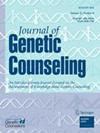Breast cancer risk assessment evaluation of screening tools for genetics referral for women in Taiwan
Abstract
Background
Risk screening tools recommended by the United States Preventative Services Task Force (USPSTF) are used to screen potential BRCA1/2 pathogenic variant carriers. The purpose of this study was to identify an appropriate breast cancer risk-screening tool for genetic referral among women with a family history of breast cancer in Taiwan.
Methods
A cross-sectional design with convenience sampling was used in this study. Women with a family history of breast cancer but not diagnosed with breast cancer were recruited from surgical outpatient clinics. Sociodemographic and family cancer history were collected based on the screening tools. Both the Tyrer-Cuzick (IBIS) and BRCAPRO were used as a Gold standard to evaluate the accuracy of five screening tools. Sensitivity, specificity, positive predictive value (PPV), negative predictive value (NPV), and the areas under the receiver-operating curve (AUC) were compared to identify the most accurate one to determine women with elevated risk as defined by IBIS and BRCAPRO calculations with lifetime risk over 15%.
Results
One hundred twenty-four women with a family history of breast cancer but not yet diagnosed as breast cancer were recruited in this study. When the Tyrer-Cuzick (IBIS) was used as the standard, the AUC for the tools ranged from 0.490 to 0.562. When the BRCAPRO was used as the standard, the p values of the Ontario Family History Assessment Tool (Ontario-FHAT) (p = 0.003) and Pedigree Assessment Tool (PAT) (p = 0.016) were significant, and the AUCs were 0.938 and 0.854 for Ontario-FHAT and PAT, respectively. Since the sensitivity of Ontario-FHAT was 100, which is higher than PAT, we considered that using Ontario-FHAT in Taiwanese women would be better than using PAT.
Conclusions
Ontario-FHAT would be an appropriate screening tool for identifying individuals in Taiwan who may need a genetic referral for further BRCA1/2 risk evaluation.


 求助内容:
求助内容: 应助结果提醒方式:
应助结果提醒方式:


